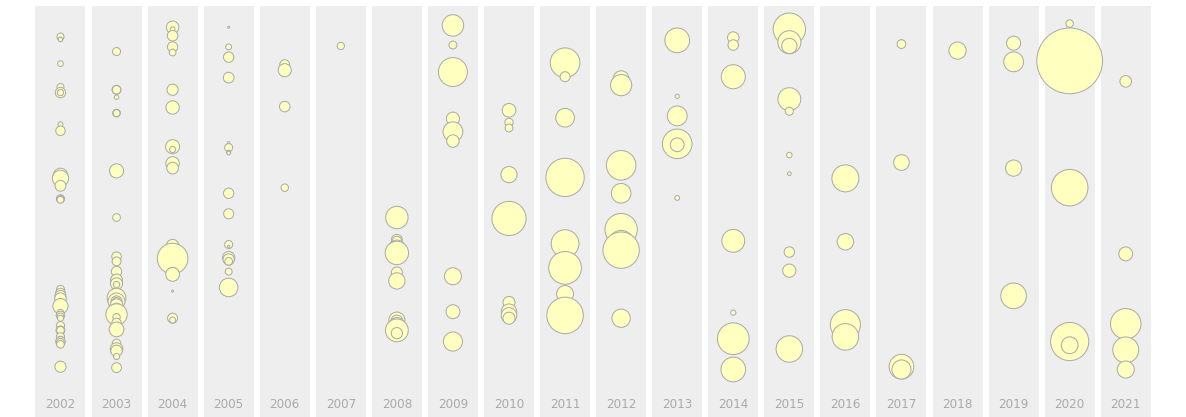Twenty Years of rho.org.uk

Twenty years ago today, the first version of this blog went live. Back then, iPhones and Twitter didn’t exist, and I was a graduate student with few demands on my time. Things have changed somewhat in the intervening period, but the blog is still here.
I’ve not been all that consistent over the years, in either the frequency or length of posting. There were 221 posts up to the start of 2022, ranging from 40 posts in 2003 to just one each in 2007 and 2018. The median post length is 123 words, the longest 4323 (my TSConf talk, a bit of an outlier), and the shortest few just 4 a piece (not counting the title).
I’ve managed at least one post per calendar year (just), and the longest gap is between January 2007 and July 2008. This was a result of the software I was using at the time becoming sufficiently unwieldy that it put me off writing anything, but also represents a sea change in the kinds of posts I put up. Before the break, it was dominated by short posts and links, the kind of thing that would now find their natural home on Twitter (not coincidentally, I joined the service during this gap). After, I tended towards more substantial (or, at least, longer), less frequent posts. These seem like a better fit for the medium, so I feel this is where the site actually hit its stride.
As well as length, the subjects and quality have been pretty variable as well. However, I’m happy with it overall — I’ve always done this for the exercise and pleasure of writing, so any merits of the end result are a pleasant bonus. With that in mind, and in no particular order, here are a few of my favourite entries over the last two decades:
- Give Me Inconvenience, Or Give Me Death!
- Progress
- ML for the Working Programmer
- Toys
- Aim High
- 1984
- Loot or Fiddle
It’s not always easy to find the time to post here, hence the erratic cadence of the archives, but whenever I do I’m glad I have. All being well, I’ll keep doing so for another twenty years at least.
(The statistics in this post, and the chart at the top, were generated using this Jupyter notebook.)